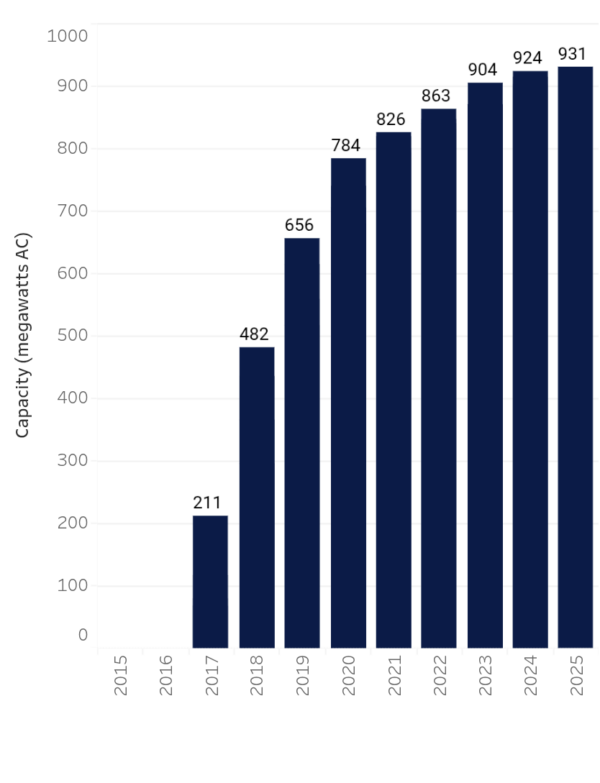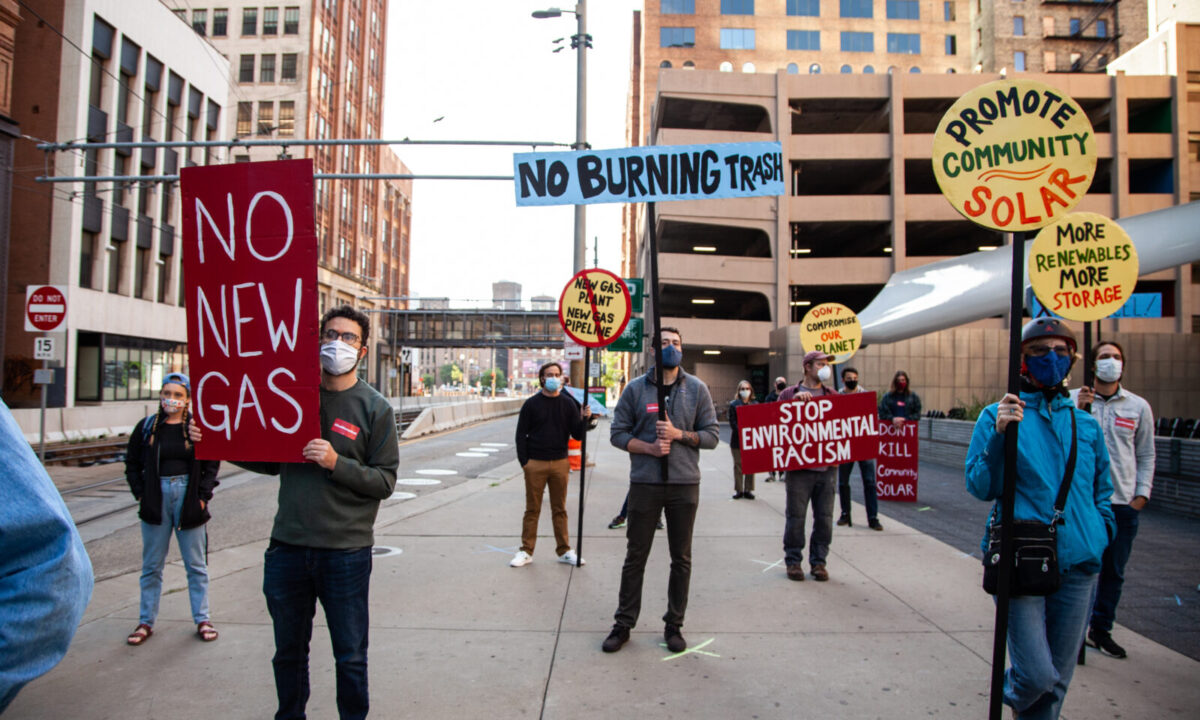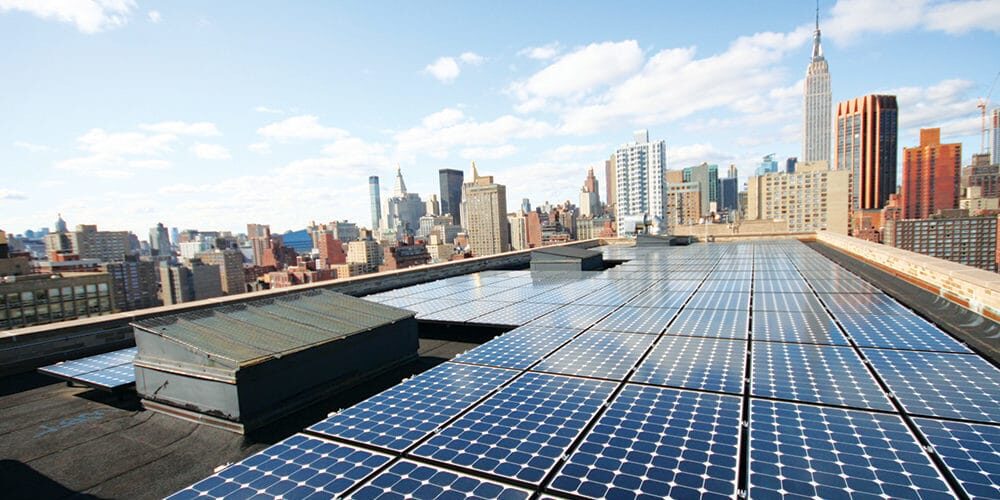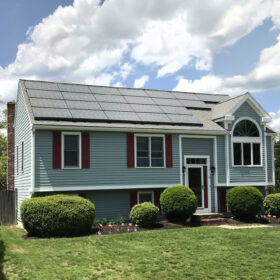Minnesota’s Court of Appeals upheld the Minnesota Public Utilities Commission’s (PUC) 2024 ruling to retroactively switch all community solar agreements to its new tariff model, causing many subscribers to break even or spend more on their electric bills each month.
The court’s decision will require all Minnesotan community solar subscribers receiving the applicable retail rate to move to the value of solar (VOS) credit rate, which is about 20% to 30% lower than the applicable retail rate.
The decision effectively cut the compensation rates for customers who subscribe to the more than 700 legacy community projects, which account for most of the state’s community solar capacity, according to the Minnesota House Research Department.
With community solar, the consumer subscribes to and receives credits on their utility bills for their portion of electricity produced by the local community solar installation. Because most community solar programs forbid utilities from owning community solar generation facilities, the programs break up utility monopolies from generation.
The VOS rate compensates solar providers for the value added to the grid — no more, no less, according to MnSEIA.
VOC rates traditionally are intended to reflect the broader value solar adds to the grid, including the fuel costs it avoids and its environmental benefits. However, the Minnesota’s new VOS rate, which became effective this spring, is about 20% to 30% less than the former applicable retail rate model.
With the former applicable retail rate model, subscribers received a bill credit based on what the utility charges regular retail customers. The retail rates included various charges, such as energy, capacity, transmission, riders and fuel costs.
The blow to Minnesota’s community solar program is significant. More than 60% of all installed solar capacity in Minnesota comes from the state’s legacy community solar program, David Moberg, a policy and regulatory affairs associate for the Minnesota Solar Energy Industries Association, said earlier this summer at Midwest Solar Expo.
“Subscribers were promised bill credits that would keep pace with their electricity bills, based on the rates in place when they signed up,” Kevin Cray, vice president, Existing Markets and Regulatory Affairs at the Coalition for Community Solar Access (CCSA) said. “But under the VOS, those credits no longer rise with retail rates — meaning customers will fall further behind as costs increase.”
“By siding with the PUC and Xcel Energy, the Court of Appeals has chosen to hurt both [community solar] subscribers and the companies that have invested hundreds of millions in private capital to serve them,” Cray said.
Last year, hundreds of school districts, residents and businesses filed public comments urging the PUC to not accept Xcel’s proposal to switch to the VOS rate. Several school districts’ public comments set forth potential property tax increases and reduced school programming that may result from the change.
In one comment, 77-year-old Maria Klein said she is on a fixed income and the consequent loss of savings would be significant and detrimental to her budget. Along with several other residents, Klein said changing the terms of her 25-year-contract “would tarnish Minnesota’s reputation as a reliable state for solar investment, harming the future of solar development statewide, not to mention the financial cost to the many [Cooperative Energy Future] subscribers.”
Cooperative Energy Futures, a community-owned solar developer serving predominantly low-income households, anticipates losing over half its member subscribers from the affected projects, with some families facing over $500 in lost annual savings, according to a joint statement from MnSEIA and CCSA.
Minneapolis said the change puts the city at risk of a property tax hike because 65 of its 80 community solar subscriptions will flip from saving the city money to costing it money. Other cities, such as St. Paul, St. Cloud and Burnsville said the change will cost them millions over the remainder of their 25-year contracts.
“This decision harms ratepayers who relied on and planned for the cost savings community solar provided and makes financing and developing clean energy projects in Minnesota more expensive and risky,” Logan O’Grady, executive director of MnSEIA said in a statement. “The [community solar] program plays a vital role in providing relief to Minnesota families in the face of rising energy bills and is an important tool to help Minnesota meet our rigorous carbon-free goals.”
For Minnesota’s ratepayers, subscribing to community solar has been a win-win by enabling them to support clean energy while taking advantage of solar’s lower cost. For Xcel, however, the more community solar projects there are, the smaller its monopoly share becomes.

Image: Institute for Local Self-Reliance
Image: The Institute for Local Self-Reliance
Xcel sees community solar “as competition to stifle,” according to the Institute for Local Self-Reliance (ILSR). “Beyond the policy itself, many of the program’s troubles boil down to Xcel Energy’s hostility toward community solar,” ILSR said. In 2023, ILSR noted that Xcel “has (predictably) petitioned each year for a lower value of solar and made claims that non-subscribing customers are subsidizing the community solar program.”
ILSR found Minnesota’s previous billing structure saved all utility customers money. However, Minnesota changed the billing structure to be more in favor of utilities.
When Minnesota nearly repealed its revamped community solar program earlier this year, Xcel said the additional power generation created by community solar’s popularity meant it must upgrade its transmission more frequently, which it said, creates further expenses.
Opponents, however, said Xcel is opposed to the program because it tears away from its monopoly status.
“Utilities routinely socialize the costs of power plants, transmission lines and grid upgrades, whether or not every customer benefits,” Vote Solar’s Patty O’Keefe said. “Yet, when it comes to community solar, the same cost sharing principles are framed as a problem.”
“The key difference is community solar introduces competition, challenging utility monopolies and reining in their ability to earn a rate of return on new infrastructure Investments,” she said.
Also read: How the One Big Beautiful Bill impacts community solar
This content is protected by copyright and may not be reused. If you want to cooperate with us and would like to reuse some of our content, please contact: editors@pv-magazine.com.









By submitting this form you agree to pv magazine using your data for the purposes of publishing your comment.
Your personal data will only be disclosed or otherwise transmitted to third parties for the purposes of spam filtering or if this is necessary for technical maintenance of the website. Any other transfer to third parties will not take place unless this is justified on the basis of applicable data protection regulations or if pv magazine is legally obliged to do so.
You may revoke this consent at any time with effect for the future, in which case your personal data will be deleted immediately. Otherwise, your data will be deleted if pv magazine has processed your request or the purpose of data storage is fulfilled.
Further information on data privacy can be found in our Data Protection Policy.